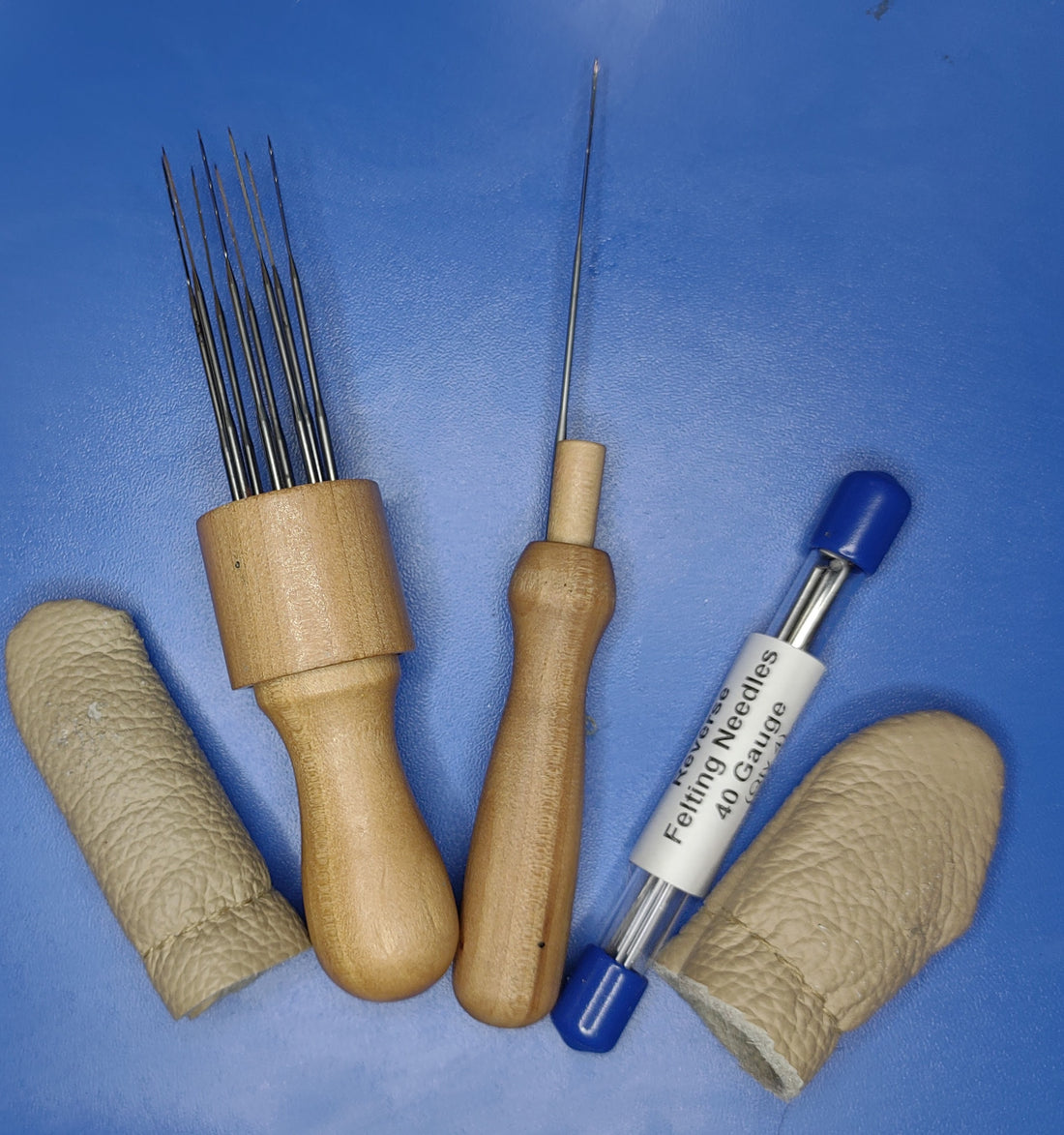
What's the Difference between Felting Needles?
Share
Wow, there's so many different types of felting needles! Which ones should you get? What are the different styles for? How do I know which felting needle I have? It can get overwhelming to try to figure this out, so here's a handy little cheat sheet!
There's four types of needles: Coarse, Medium, Fine, and Reverse.
There's three shapes: Triangle, Spiral, and Star.
There's six gauges of needles: 32, 34, 36, 38, 40, & 42.
Confused yet? So was I! It takes time, practice, and experimentation to find your favorites. Plus, if you bought a variety pack, you probably don't even know which needle you're using! If you're like me, they just went into a nice container, and then they got all mixed up, lol!
So let's go over these definitions.
Coarse: These are needles with a small gauge number, like 32, 34, & 36. This confused me a lot at first, because you would think that the smaller the number, the smaller the gauge, but no, whoever thought up this gauge system went backwards. The smaller the number, the thicker the needle. Coarse needles are more aggressive, are usually used at the start of a project, and need more of a driving action, instead of a fast poking action. They're good for getting your shapes started. They tend to leave visible holes in your wool and have a higher resistance to going into your wool
Medium: These are the 38 needles, and they are a great all-around needle. They still grab more of your wool than the fine needles, but don't have as much resistance as the coarse needles. I like these needles for starting my projects and getting my shapes felted.
Fine: These are the higher gauges, 40 & 42. These are the thinnest needles, and are perfect for detail work like eyes, tiny polka dots, fine lines. They just glide right in and out of your project. Use these for refining your piece and making it smooth, getting rid of all those tiny holes made by the medium and coarse needles. They really help with getting all the wispy ends felted in.
Reverse: These needles have the barbs going in the opposite direction. They're used for when you want a fuzzy/hairy effect. They pull out some fibers from your piece, so you can get a realistic 'fur' type effect.
And now the shapes! Each shape has different gauges! Agh! Just when you thought you had it all down.
Triangle: These have three sides (of course), with barbs on all three edges. The shaft is straight. These are a great basic, starter needle. You can do almost everything with these. A 36, 38, & 40 triangle needle would get you through any project.
Spiral: These are like the triangle needle has been twisted. They also have gauges. As you rotate the needle under a light, you can see the light moving up and down the shaft of the needle. You can add these needles to your toolbox as you get more proficient. The fine gauge spirals really help a lot with getting all the wispy ends felted in, and I really like these needles to finish my projects with. They also help to hide all those tiny holes in your project made by the coarse and medium needles.
Star: You don't have to have these. I haven't bought any yet. They are much more aggressive than the coarse triangle needles, and I really haven't thought that I needed that much aggression, lol!
To figure out which needles you have, just take some fluffy wool and start stabbing! Does the needle go in and out without any effort and not much of anything being done? That's a fine gauge needle. Does it have a lot of resistance going into the wool and just sort of push it down? That's a coarse gauge needle, and will need more of a driving action. Does it go in and out with some resistance, and still grab wool, and you can see the felting happening? That's a medium gauge needle.
Don't worry! As you do more and more needle felting, you will get a feel for which ones you like best for which stage of your project! I started out with just the triangle needles, added spirals, and just lately have been trying out the reverse needles! My needles are still all mixed up in the container (except the reverse ones - they have their own container), and I just use the fluffy wool stabbing technique to find the one I like the best to start my project with!
Have fun and remember, creativity is within you!!!!